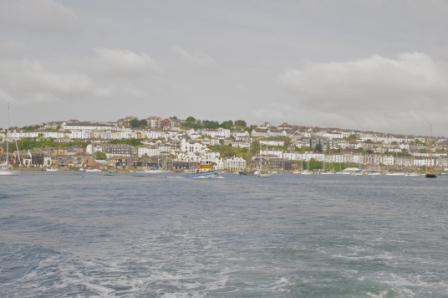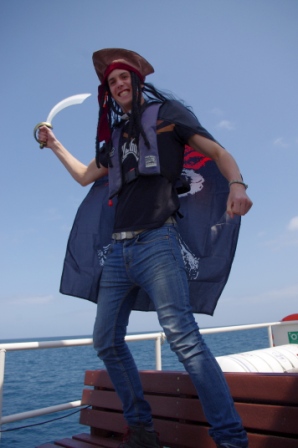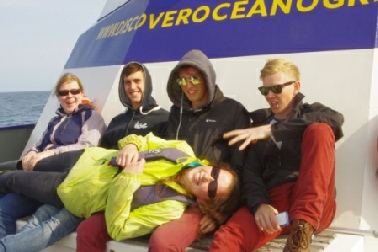
Falmouth Group 4
23rd June- 6th July 2013
The Fal estuary is a drowned river, also known as a ria. There is a central deep water channel which continues up to Truro and dates back to the last ice age which finished approximately 10,000years ago. The estuary was used as an anchorage in the years following the Second World War as it is one of the largest natural harbours in the world, alongside Sydney, Australia; New York City Harbour, USA and Pearl Harbour, Hawaii. The estuary is still a busy seaport and is used as a ship repair yard, bunkering facilities and anchoring of pleasure yachts. The estuary is also an SSSI (Area of Special Scientific Interest) due to its wide range of habitats.9```
The Fal is one of a series of slow moving rivers that drain in to the main channel known as Carrick Road (British Trust for Orthonology 2005) which is a drowned river channel, also known as a ria (Natural England 1996). The deep channel – which dates back over 10,000 years to the last ice age – provides one of the largest naturals harbour in the world allowing ocean going vessels including ‘TI Europe’ to anchor (Langston et al 2006).
Introduction
The Fal estuary is fed by the rivers Fal, Truro and Penryn amongst others.
A successful oyster farm has been present in the Fal for over five hundred years without adverse effects. The oysters are harvested without the use of chemicals or machinery.
The Fal has a range of sediment characteristics and types, which leads to a wide range of habitats within the estuary. Fine sediments are affected by wave and tidal action and periodically form sand ripples across the sea floor, allowing burrowing polychaetes and bivalves to thrive.
Kelp (Laminaira sp.) grows where rocks are exposed and provide a solid grounding for a holdfast. Below the kelp other species such as sponges and anemones compete for space, whereas animals hide amongst the holdfasts and other algae. The Kelp fronds themselves provide a habitat for small epiphytes such a colonial bryzoans and red algae, along with a food source for blue-rayed limpets (Patella pellucida) which graze on small hydroids.
Eelgrass (Zostera marina) beds are found close to the shore within the Fal, along with large beds in the River Helford. They stabilise the sediment and reduce wave action along with providing a safe habitat for juvenile Bass and Cuttlefish. The Eelgrass beds are also home to a variety of small fish, crabs, anemones, epiphytes and pipefish.
Maerl beds can be found in some areas of the Fal, particularly around St.Mawes. Maerl is an extremely slow growing (<1mm/yr) coralline algae which provides a complex 3D nursey for commercial species such as Cod (Gadus morhua), Pollock (Pollachius pollachius) and Scallops (Aequipecten opercularis).
Further Background:

Other tributaries to Carrick Road include the River Truro and Penryn, as well as other tributaries which still contain polluted sediments after many mining accidents (Hudson-Edwards et al 2008). The estuary is still a busy seaport and is used as a ship repair yard, bunkering facilities and anchoring of pleasure yachts. The estuary is also an SSSI (Area of Special Scientific Interest) due to its wide range of sediment types and biodiversity. This includes maerl beds, eelgrass (Zostera marina) and kelp (Laminaira sp.) which are all found surrounding the channel and mapped on the geophysics map produced. Part of the reason that these endangered habitats continue to flourish in this area is the continuously flowing water that keeps sediment from accumulating, whilst providing a suitable habitat for many fish to breed. Maerl in the Fal acts as a nursery for many species including as Cod (Gadus morhua), Pollock (Pollachius pollachius) and Scallops (Aequipecten opercularis), all of which have commercial importance (Falmouth Port 2009). This was another part of the foundation for it being declared a SSSI, AONB (area of outstanding natural beauty) and also getting SAC status(special area of conservation) to protect the sediment beds which are formed (JNCC 2013). The oysters among the other organisms which breed in the estuary have been farmed for over 500 years, maintaining a healthy population in the river, and continue to be farmed without the use of chemicals or machinery.


Personal views and information calculated on this page cannot be affiliated with the University of Southampton or the National Oceanography Centre, Southampton.